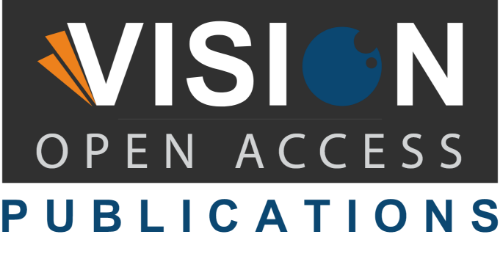Vision Publications is an open-access platform that advocates for scientific research. Our objective is to deliver high-quality papers to emerging researchers globally. Author guidelines for a scientific publication generally offer comprehensive instructions for authors intending to submit their research manuscripts. These requirements aim to guarantee that contributions adhere to the journal’s criteria for quality, clarity, and formatting.
Author Guidelines
Manuscript Submission Structure
Submission Process
Title: It must be succinct, informative, and encapsulate the primary emphasis of the research.
Abstract: Author should provide the brief summary of the study which highlight the objectives, methods, results, and conclusions.
Keywords: provide atleast 5-6 which relate to the paper
Materials and Methods: Introduce and discuss the new innovation in the article
Results: Provide the data which includes tables and figures in the paper
Discussion: Conclude the results in the research and limitations of the study
Conclusion: Provide a concise summary of the primary discoveries, their implications, and prospective future research.
Acknowledgments: Author should provide funding details if they received any funds their organizations.
References: We follow the citations format in NLM, it should be properly mentioned in the body content and references sections.
Author Should follow the Ethical Guidelines (or) Rules in Open Access
Upon submission of an article to any of our journals, authors are required to refrain from submitting the same article to any other journal until it has been officially withdrawn from the current journal.
2. Research Article Preparation Guidelines
- Scope: The research should address relevant questions or hypotheses in the field, employ robust methodologies, and provide significant insights.
- Structure: Research articles should include:
- Introduction: Clearly state the research problem, objectives, and relevance.
- Methods: Provide detailed descriptions of the experimental or analytical methods used, including sample size, data collection techniques, and statistical analyses.
- Results: Present findings in a clear and concise manner, supported by tables, graphs, and charts as needed.
- Discussion: Interpret the results in the context of existing literature, highlighting their implications and limitations.
- Conclusion: Summarize the main findings and suggest areas for future research.
- Length: Research articles should not exceed 5000 words, excluding references, tables, and figures.
- Formatting: Manuscripts must be double-spaced, with 1-inch margins on all sides and numbered pages.
- Submission Template: Authors are encouraged to use the Research Article Template provided on our website to streamline the submission process.
Additionally, ensure that ethical considerations are addressed, including obtaining Institutional Review Board (IRB) approval for studies involving human or animal subjects. Research involving sensitive data must adhere to privacy regulations such as GDPR.
3. Review Articles
Review articles provide a comprehensive synthesis of the existing literature on a specific topic. They critically analyze current knowledge, identify gaps, and propose directions for future research. At Peertechz Publications, review articles are highly valued for their ability to provide a broad perspective and set the stage for new investigations.
- Scope: Topics for review articles should be relevant to the journal’s focus and appeal to a broad readership. Authors are encouraged to select emerging or highly debated topics.
- Structure: Review articles should include:
- Abstract (Not Mandatory): A concise summary of the review’s purpose, scope, and key findings.
- Introduction: Outline the importance of the topic, objectives of the review, and criteria for literature selection.
- Body: Divide the content into thematic sections, each addressing specific aspects of the topic. Use subheadings for clarity.
- Conclusion: Summarize the key takeaways and provide recommendations for future research.
- Length: Review articles should not exceed 7000 words, excluding references.
- References: Include a comprehensive list of references, ensuring accurate citation of all sources.
